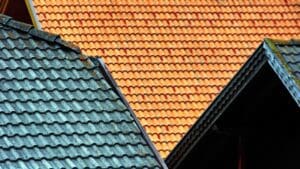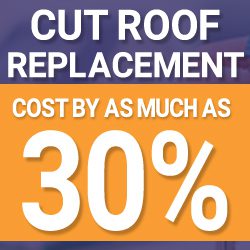
What is the Best Material to Use for Roofing?
Begin with an overview of the importance of selecting the right roofing material, noting how this choice impacts a home’s aesthetic appeal, durability, and overall protection. Introduce the concept of diverse roofing materials catering to different climatic conditions, architectural styles, and budgetary constraints, setting the stage for a deeper dive into each option.
Understanding Roofing Materials
Asphalt Shingles
- Description: The most common roofing material in North America, known for its cost-effectiveness and versatility.
- Best For: Homeowners looking for an affordable, durable option with a wide range of colors and styles.
- Climate Suitability: Performs well in varied climates but may require more frequent replacement in areas with extreme weather conditions.
Metal Roofing
- Description: Available in steel, aluminum, and copper, metal roofs offer longevity and resistance to extreme weather.
- Best For: Those seeking a durable, fire-resistant roof with minimal maintenance; ideal for homes in wildfire-prone areas.
- Climate Suitability: Excellent for both hot and cold climates, reflecting sunlight to keep homes cooler in summer and insulating against cold in winter.
Clay and Concrete Tiles
- Description: Heavy, durable tiles that add a distinctive aesthetic to homes.
- Best For: Achieving a Mediterranean or Spanish look, suitable for luxury homes.
- Climate Suitability: Best in warm, dry climates; clay tiles offer exceptional longevity and fire resistance.
Slate Roofing
- Description: Made from natural slate rock, this premium roofing material is known for its beauty and lifespan of over 100 years.
- Best For: Historic and high-end homes where durability and aesthetic are prioritized.
- Climate Suitability: Effective in harsh winter climates due to its resistance to cold and moisture.

Wood Shingles and Shakes
- Description: Crafted from cedar, redwood, or pine, wood shingles offer a natural, rustic appearance.
- Best For: Enhancing the charm of traditional or historic homes.
- Climate Suitability: More suitable for drier climates; requires treatment for fire resistance and may be prone to rot in wet areas.
Synthetic Roofing (Rubber, Plastic, Polymer)
- Description: Synthetic materials mimic the look of natural roofing materials like slate and wood but at a lower cost and weight.
- Best For: Homeowners wanting the appearance of premium materials without the associated costs and maintenance.
- Climate Suitability: Varied, depending on the specific material; generally offers good durability and weather resistance.
Green Roofing
- Description: A living roof covered with vegetation, promoting environmental sustainability.
- Best For: Eco-conscious homeowners interested in insulation, reducing stormwater runoff, and creating habitat spaces.
- Climate Suitability: Requires a structurally sound roof to support the weight; best in urban environments where they can help reduce the heat island effect.

How to Decide What Roof is Best for Your Home
Consider Your Home’s Architectural Style
The architectural style of your home can significantly influence your choice of roofing material. Traditional homes may benefit from the classic look of slate or wood shingles, while modern homes might suit metal or synthetic roofing better.
Evaluate Climate and Environmental Conditions
The climate in your area plays a crucial role in determining the suitable roofing material. For areas prone to wildfires, metal or tile roofs could be preferable for their fire resistance. Conversely, in regions with heavy snowfall, the durability and weight-bearing capacity of slate might be ideal.
Budget and Longevity
Balancing your budget with your desired longevity is essential. While asphalt shingles might be the most budget-friendly upfront, materials like metal and slate offer longer lifespans and may provide better long-term value despite higher initial costs of roofing materials.
Maintenance Requirements
Consider how much maintenance you’re willing to undertake. Materials like metal and synthetic roofing offer low maintenance, while wood shingles may require more upkeep to prevent decay and ensure longevity.
Energy Efficiency and Sustainability
For homeowners interested in energy efficiency, materials like metal roofing that reflect sunlight can reduce cooling costs. Green roofing options offer added insulation and contribute to a home’s overall sustainability.
Selecting the right roofing material is a decision that affects not just the immediate appearance of your home but also its long-term durability, protection, and efficiency. By considering factors such as architectural style, climate suitability, budget, and maintenance requirements, homeowners can make informed choices that align with their needs and preferences.

Considering Roof Trends When Choosing a Material
In the rapidly evolving world of home design and construction, staying abreast of the latest roofing trends can not only elevate the aesthetic appeal of your home but also its market value and functional efficiency. When selecting a roofing material, considering current trends alongside traditional factors like durability, cost, and climate suitability can lead to a choice that’s both visually pleasing and pragmatically sound. Let’s dive into how emerging roof trends can influence your material selection.
Emphasis on Eco-Friendly and Sustainable Options
Sustainability is no longer just a buzzword but a guiding principle in home construction and renovation. Materials that have a lower environmental impact, such as recycled metal roofing, green roofs, and even solar tiles, are gaining popularity. These options not only reduce your carbon footprint but can also offer energy savings and enhance the biodiversity of your urban area.
The Aesthetic Appeal of Luxury Materials
There’s a growing interest in materials traditionally considered luxurious due to their aesthetic appeal and longevity. Slate and clay tiles, for instance, are being chosen not just for homes with a Mediterranean or European architectural style but also for adding a touch of elegance to more modern designs. These materials are prized for their unique natural beauty and the character they add to a home’s exterior.
Cool Roofing Technology
With increasing awareness of the impact of heat islands in urban areas, cool roofing materials are coming to the forefront. These materials are designed to reflect more sunlight and absorb less heat than standard roofing materials, leading to lower energy costs in warm climates. Metal roofs with special reflective coatings and light-colored tiles are examples of cool roofing options that combine functionality with trend-conscious design.

The Rise of Synthetic Materials
Synthetic roofing materials, including rubber, plastic, and polymer-based products, are becoming more popular due to their versatility, durability, and ease of maintenance. These materials can mimic the look of wood shakes, slate, and other natural materials while offering improved fire resistance, impact resistance, and often at a lower cost. This trend reflects homeowners’ desire for the best of both worlds – the aesthetic of traditional materials with the benefits of modern technological advancements.
Integrated Solar Solutions
As renewable energy solutions become more accessible and aesthetically pleasing, integrated solar roofing materials are making their way into mainstream roofing options. Unlike traditional solar panels that mount on top of existing roofs, these innovative materials incorporate photovoltaic cells directly into roofing shingles or tiles, providing a seamless look while generating electricity.
Choosing Based on Trends vs. Timelessness
While it’s enticing to choose a roofing material based on the latest trends, it’s crucial to balance this with considerations of timelessness and longevity. A roof is a long-term investment, and what’s trendy today might not be in style in the next decade. Materials like metal roofing and slate have stood the test of time, offering both contemporary appeal and enduring quality.
Consulting with a Professional
Given the array of options and trends, consulting with a roofing professional or designer can provide clarity and direction. These experts can offer insights into how a particular material or trend fits with your home’s architecture, the local climate, and your personal preferences. They can also provide valuable information on the expected lifespan, maintenance requirements, and potential resale value impact of different roofing materials.
Your choice of roofing material can significantly impact your home’s appearance, energy efficiency, and resilience against the elements. By considering both the timeless factors and the current trends in roofing, you can select a material that not only protects your home but also aligns with your aesthetic preferences and environmental values. As you navigate this decision, remember that the best choice is one that harmonizes with your home’s overall design, meets your practical needs, and represents your vision for your living space.
For those ready to embark on a roofing project or seeking further guidance, reaching out to professional roofing contractors or specialists can provide personalized advice tailored to your specific situation. With the right partnership and materials, your new roof can elevate the beauty, value, and safety of your home for decades to come.




Leave a Reply